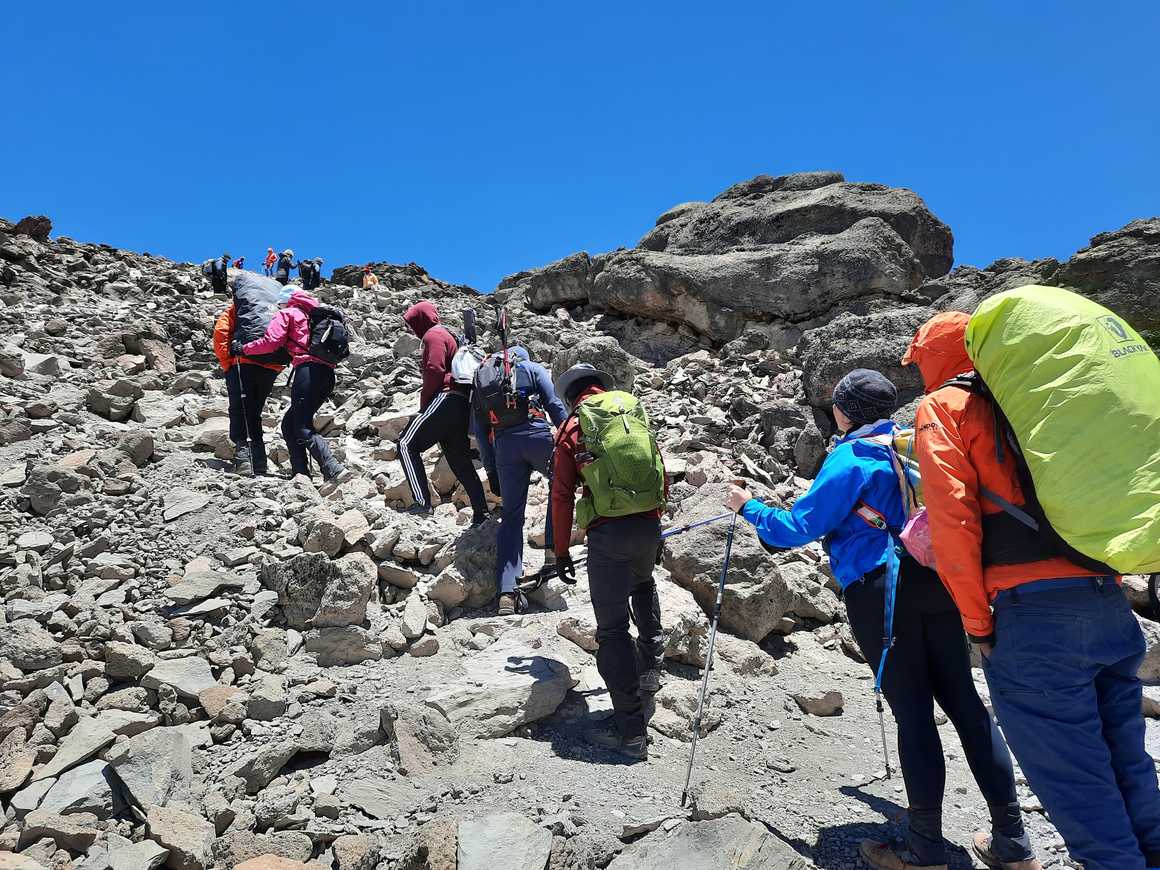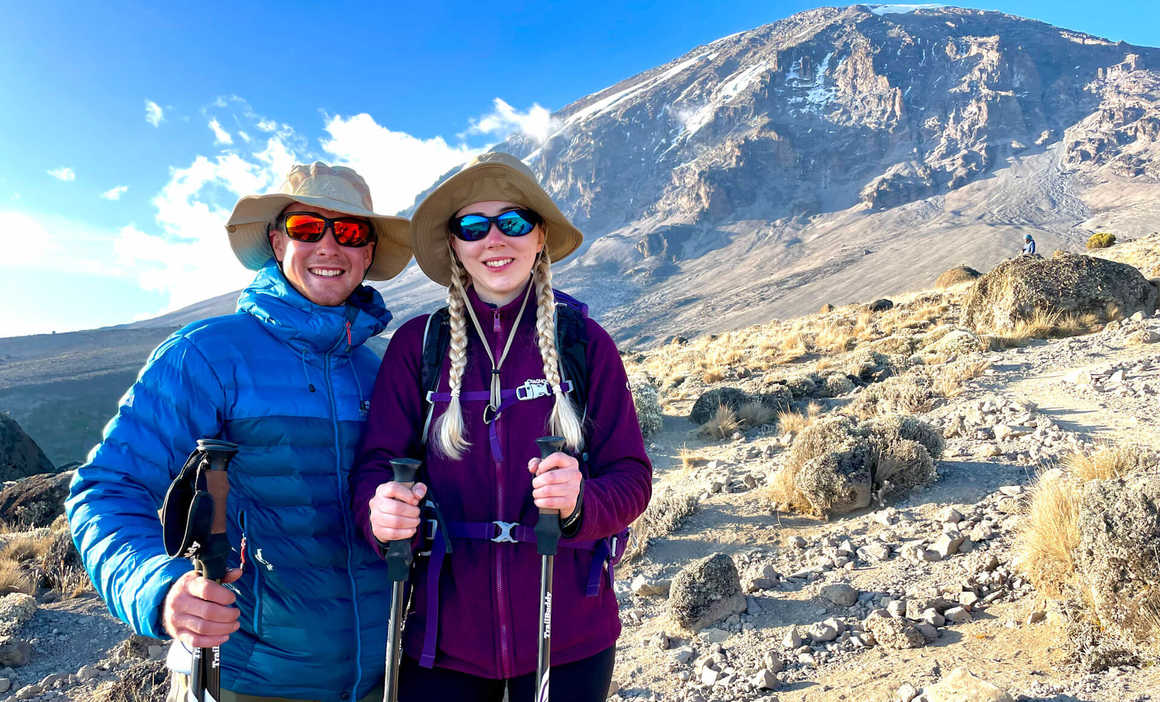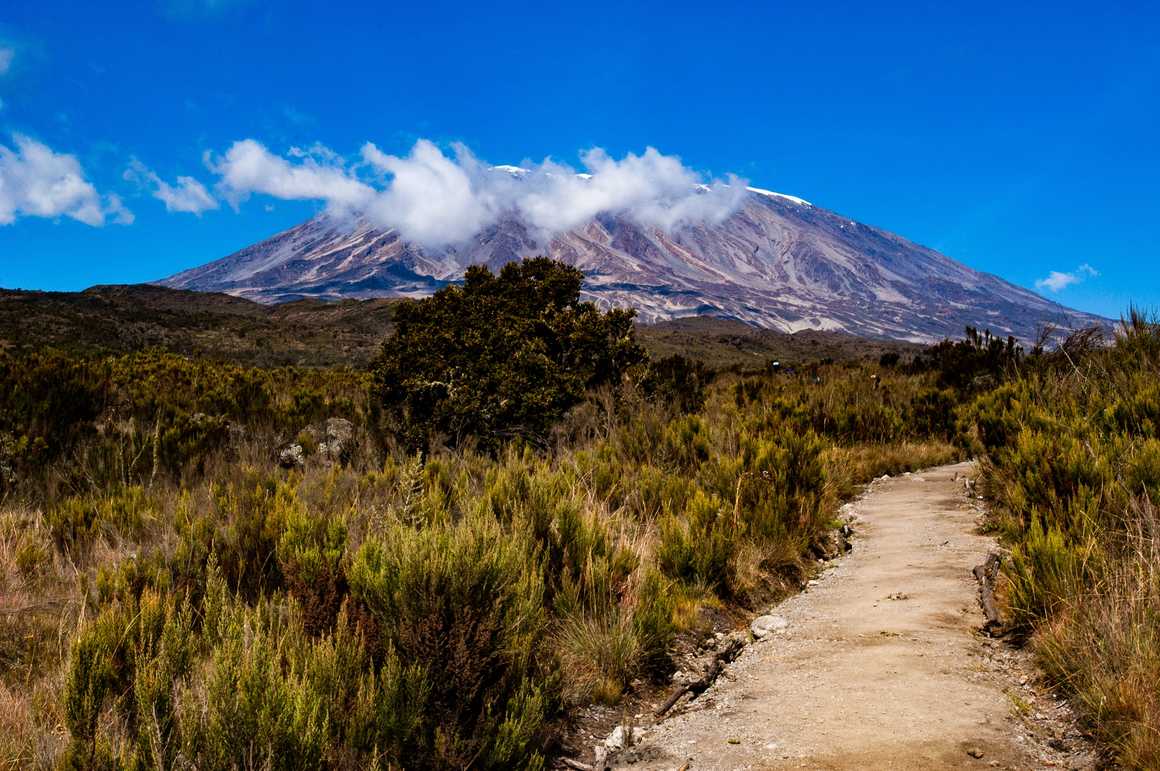How Long Does It Take to Climb Kilimanjaro and Descend to the Finishing Point?
Adventurers looking to climb Mount Kilimanjaro frequently
ask how long does it take to climb Kilimanjaro? To put it simply, there are 7
different established Kilimanjaro routes and depending on which route you choose;
it takes between 5-9 days to reach Kilimanjaro summit and descend to the
finishing point. The more days spent on the mountain, the more likely you will reach the summit as you will become more acclimatised to the altitude and will be less fatigued.
Requiring no technical mountaineering skills or equipment,
Kilimanjaro has greeted many first-time altitude trekkers daring the ascent to
the summit. This is not to say that Kilimanjaro is an easy feat, but a tough
challenge for many. Whether you’re climbing Kilimanjaro for personal fulfilment
or for a charitable cause, you’ll need to spend some time contemplating how
long you want to spend on the mountain and the best route to climb
Kilimanjaro for you.
There are several factors affecting how long it takes to
climb Kilimanjaro including the route, how well your body acclimatises to the
altitude, your physical and mental stamina and the time of year you visit. Here,
we have compiled a breakdown of how long it takes to climb Kilimanjaro on each
of the 7 Kilimanjaro routes, factors affecting the time you will spend on the
mountain as well as some quick facts about some of the fastest summits of the
majestic mountain.
If you only take one thing away from this blog, let it be
that slow and steady wins the race!

Factors Affecting How Long It Takes to Climb Kilimanjaro
Altitude sickness is indiscriminate – it can affect anyone
and everyone, even the most experienced trekkers and mountaineers. Altitude
sickness is when your body doesn’t have time to adjust to reduced oxygen
availability when you’re at a high altitude. Your age and gender have no
bearing on whether you’ll suffer from altitude sickness or how severe your
symptoms may be. So, if you’re planning to climb Kilimanjaro, you’ll need to
plan for the possibility of altitude sickness.
It’s fair to say that you may experience some of the common
minor symptoms of altitude sickness when you make your ascent of Kilimanjaro such
as headaches which can be treated with painkillers and by maintaining your
water intake. The drug Acetazolamide (Diamox) is also widely considered to be
effective in managing altitude sickness as a whole. It’s when these symptoms
become more moderate to severe that your chances of reaching the summit of
Kilimanjaro are threatened.
Unfortunately, there isn’t much you can do to avoid altitude
sickness completely without going into altitude, but you can prevent and manage
it by taking the ascent slow to allow your body time to acclimatise to higher
altitudes, rewarding yourself with regular breaks and staying hydrated. Getting
yourself fit before attempting the trek is also a good step towards preventing
altitude sickness as your body will be able to better cope with the reduced
oxygen and changes in air pressure.
Although Mount Kilimanjaro National Park is open all year
round, conditions differ throughout the year which may affect the time you
spend on Kilimanjaro and your chance of summit success, so you may want to
spend some time considering the best time of year to climb Kilimanjaro. Fortunately,
the weather on Kilimanjaro is fairly predictable, with distinct dry seasons and
rainy seasons.
We recommend climbing Kilimanjaro during the warmest and
driest time of year, from June to October and December to March because these
periods offer you the best chance of successfully reaching the summit. Although
these months will be noticeably busier than others, you will most likely
receive dry weather with clear skies, which make for great views and ideal
trekking conditions.
For a complete breakdown of the Kilimanjaro climbing
seasons, when is safest to visit and when not to chance your luck, check out
our blog on the best time to climb Kilimanjaro.
Your fitness level may also impact the amount of time it
takes to climb Kilimanjaro as the fitter you are, the easier and more enjoyable
you will find the trek. With that being said, anyone with a decent level of
fitness has a great chance of successfully summitting Kilimanjaro. As a rough
guide, if you are happy hill walking for 6-7 hours at ascent then you should be
able to climb Kilimanjaro. Even better, you can prepare your body for the trek
by getting out on long hill walks for 2-3 consecutive days.
Having a good level of fitness will make the climb a lot
easier and having a solid training plan will allow you to
prepare better for the climb and allow you to enjoy yourself when you’re on the
mountain. You will be required to carry a 30-40 litre daypack up the mountain
and should account for this in your training. No matter your level of fitness
and trekking experience, it is still advised that you take the ascent slow to
allow your body time to acclimatise to the altitude.
Mental stamina is just as important as physical stamina when
it comes to climbing Kilimanjaro. Even if you’re extremely physically fit,
you’ll need to be mentally prepared for the challenge. The slow grind to the
summit, walking up to 6-7 hours per day for 6-9 days, depending on the Kilimanjaro
route you choose, can wear you down. Maintaining a positive attitude and
digging deep to push through is incredibly important and a valuable skill to
have when tackling Kilimanjaro.

Kilimanjaro Summit Success Rate
How Long Does It Take to Climb Kilimanjaro on Each Route?
The Machame Route, Kilimanjaro, is one of the most
popular Kilimanjaro routes on the mountain. It features steep ups and downs,
but hikers of this route are rewarded for their efforts with the sheer
diversity and natural beauty of the terrain along the journey. The Machame
Route can be completed in a minimum of 6 days for trekkers with experience at
altitude, but it is recommended to dedicate an extra day for acclimatisation,
meaning that the trek should be completed in a total of 7 days.
The Lemosho Route is one of the most scenic
Kilimanjaro routes, beginning with a trek through verdant rainforest and
guiding trekkers through the vast open moorland of the Shira Plateau. Like the
Shira Route, Lemosho starts on the western slopes of the mountain but much
further down meaning you are less likely to experience altitude-related issues
on the first day. While Lemosho, has been known to be completed in 6 days, we
recommend opting for a longer 8 to 10 day expedition.
Attracting more climbers than the other routes combined, the Marangu Route is easily the most popular of the Kilimanjaro routes.
Often billed as one of the easier Kilimanjaro routes the Marangu Route offers a
gradual and direct path to the summit but suffers one of the lowest success
rates because too many trekkers try to complete it in only 5 days. The longer
6-day variation of the route reduces the risk of altitude-related issues and
increases the chance of summiting successfully.
Considered as one of the easier Kilimanjaro routes, the Rongai
Route is achievable in 6 to 8 days, allowing climbers a better chance to
adapt to the altitude and the best chance of summit success. The Rongai Route
is the only Kilimanjaro route that approaches the mountain from a northerly
direction meaning the ascent is less prone to wet weather, is less crowded and
offers spectacular scenery along the way, although a slightly more expensive
journey is required to begin the trail.
The Northern Circuit is much more remote than the
other Kilimanjaro routes and has the benefit of less traffic from other
trekkers. The northern side of Kilimanjaro is not short of spectacular scenery
and potential to spot native wildlife, offering a fantastic combination of all
the best elements of the other routes on Kilimanjaro. Achievable in 9 days for
those who have not trekked much at high altitudes, the Northern Circuit has one
of the mountains highest summit success rates.
The lesser used Shira Route was the original route of the
improved and more favourable Lemosho Route. The Shira Route, Kilimanjaro,
begins near the Shira Ridge and suffers from a low success rate because of its
high starting point, causing trekkers to experience altitude related symptoms.
The route can be completed in a minimum of 6 days by those with experience of
trekking at altitude but an additional day or two is recommended.
The Umbwe Route is one of the shortest of the 7 established Kilimanjaro
routes and one of the most challenging with poor acclimatisation opportunities.
This steep and exposed route on Kilimanjaro suffers from a low summit success
rate due to its fast ascent to high altitude and should not be taken unless you
have a lot of experience trekking at altitude. It is typically completed in 6
to 7 days.

Quickest Times to Summit Kilimanjaro
- In August 2014, the Swiss climber Karl Egloff is
the current record holder as the fastest ascent and descent up Kilimanjaro
having completed the Umbwe route in 6 hours and 42 minutes.
- Kristina School Madsen holds the title of the
fastest woman to climb Kilimanjaro, reaching the summit in 6 hours and 53
minutes.
To put this into perspective, most trekkers take around 7
days to complete the ascent and descent of Kilimanjaro on one of Kilimanjaro’s
established routes. These elite athletes will have undergone intense training
and pre-acclimatisation to achieve these mind-blowing records.
So, there you have it, slow and steady wins the race…
always! To answer the question ‘how long does it take to climb Kilimanjaro’, it
is completely dependent on the route you choose, your fitness level, mentality,
the time of year you visit and how long you allow yourself to acclimatise to
the altitude. To reiterate, the more days you spend on Kilimanjaro, the more
likely you are to reach the summit as you will become more acclimatised to the
altitude and will be less fatigued. We hope you found this helpful your decision
making on which once-in-a-lifetime Kilimanjaro route to take on.










